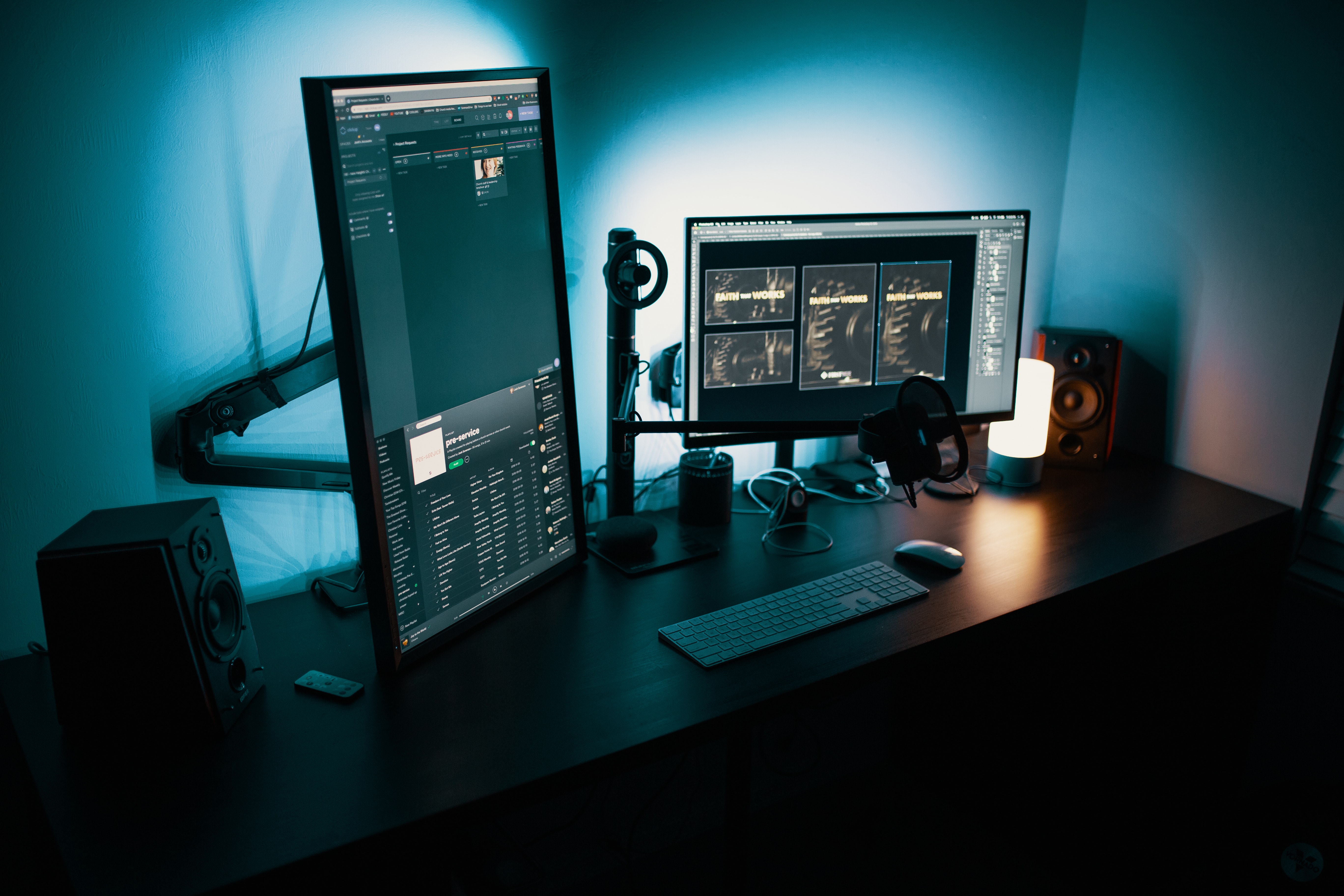What Is Cmos Camera?
Cameras have become essential part of our daily lives, from capturing cherished moments to powering high-tech surveillance systems. But have you ever thought about why they are so efficient? One of the most revolutionary components in modern cameras is CMOS sensor. A CMOS in camera combines advanced technology with practicality to offer incredible image quality while conserving energy.
Here in this article i will discuss what a CMOS camera is, how it works, and why it's so revolutionary in photography and videography. This blog post will help you better understand CMOS cameras. Let's get started.
Part 1. What Is Cmos on Camera?
CMOS is a kind of image sensor used in almost all the modern cameras which converts light into electronic signals, so that cameras might capture the best images possible and the best videos out there. Unlike the aged CCD sensors, CMOS camera sensors are faster, relatively energy efficient, and still provide good performance under both bright and dim lighting, making them a favorite tool for smartphones, professional DSLRs, and surveillance systems.
CMOS sensors are really excelling at balancing image quality with speed and affordability, dominating the camera market today. With recent technological advances, the latest CMOS on cameras have come into the market with fantastic resolution, excellent low-light features, and high frame rate.
Top Three Trending CMOS Camera
- 1. Sony Alpha 7 IV - $2,498:This is actually a mirrorless camera noted for its 33 MP full-frame CMOS digital camera sensor.
- 2. Canon EOS R6 Mark II - $2,499:This camera is provided with a 24.2MP full-frame CMOS sensor and is highly ideal for photographers and videographers alike, with extraordinary low-light performance.
- 3. Nikon Z fc - $959:This retro- style mirrorless camera houses a 20.9MP CMOS sensor for incredible image quality and lightness at a budget price.
Part 2. Pros and Cons of Camera with CMOS
Choosing a camera with CMOS is not a simple task, especially when it comes to its core technology. CMOS sensors have changed the imaging world by providing tremendous benefits. However, as with any technology, there are also disadvantages. Let's look at the pros and cons of cameras with CMOS sensors to guide you in making the right choice.
Pros
1. Lower power consumption
CMOS sensors are power efficient and use much less power than CCD sensors. Therefore, they are very effective for battery-operated equipment such as smartphones and portable cameras, meaning they provide longer usage times.
2. Faster image capture
Because they process data faster, CMOS cameras can capture higher frame rates, which makes them perfect for catching fast-moving subjects or creating smooth video. This speed makes them the first choice for sports photography and videography.
3. Cost-effective
High performance can be achieved without very expensive manufacturing, giving producers space to design top-class cameras at competitive prices. Due to this reason, more people can access the best performance cameras.
4. Compact design integration
Compact sizes mean that CMOS sensors are easily integrated into other miniaturized products like smart phones, drones, and compact digital cameras.
5. Improved performance in recent advancements
Modern CMOS sensors have innovations such as backside illumination (BSI) and stacked sensor designs which provide better low-light performance, higher resolutions and less noise compared to the earlier versions.
Cons:
1. Historically higher noise levels
Early CMOS sensors were known to produce photos with increased noise levels, particularly in low-light circumstances. While this has been improved, it remains a consideration in some models.
2. Lower light sensitivity (compared to early CCDs)
Older CMOS sensors were less sensitive to light than CCD sensors, making them less suitable for night photography. However, recent advancements have helped to close the gap.
3. Rolling shutter effect
Rolling shutter distortion is a common problem with CMOS sensors, which causes fast-moving objects to seem skewed or warped. This is a downside of high-speed video recording.
4. Reduced dynamic range (in older models)
Early CMOS sensors had a restricted dynamic range, which caused detail loss in extremely bright or dark portions of an image. Modern sensors have mostly addressed this issue, but it's worth noting.
5. Complex on-chip circuitry
The sophisticated construction of CMOS sensors can make them more susceptible to heat buildup and signal interference, potentially reducing image quality in certain situations.
Part 3. Best HD Video Enhancer Free Try
As we learn more about cameras and video technology, it is always good to understand how you can improve the quality of your footage. Whether captured with CMOS or otherwise, a reliable video enhancer can be a game-changer in your visuals. One great tool in this situation is HitPaw VikPea (formerly HitPaw Video Enhancer).
HitPaw VikPea is an advanced video enhancement tool with a design to boost quality easily. Whether it's old footage restoration or enhancing videos for HD and up to 4K quality, this software uses sophisticated AI algorithms to get the work done perfectly. The good news is you get it for free; thus, any individual with an interest or requirement can easily use this program.
Features of HitPaw VikPea
- AI-Powered Upscaling: It automatically increases video resolution, converting footage to HD, 4K, or higher with precision.
- Noise Reduction: The tool reduces grainy artifacts and improves clarity, resulting in smoother images.
- Color Optimization: The tool balances colors and changes brightness and contrast to produce beautiful, lifelike images.
- Frame Rate Enhancement: It improves motion smoothness by interpolating frames to provide a fluid viewing experience.
- Video Restoration: It helps to restore old or damaged videos by breathing new life into memories.
Steps to Enhance Video
Step 1.Download HitPaw VikPea from the official website. Follow the instructions and install the software.
Step 2.Launch the software and select the video you want to improve from your computer using the "Add Files" or "Import" button. You can import various images at once.

Step 3.Based on your requirements, select the most appropriate AI enhancement model. Change the resolution (for example, upscale to 4K) and apply any other upgrades.

Step 4.Once the improvement is finished, export and save your high-quality videos.

Learn More about HitPaw VikPea
Part 4. FAQs of Cmos Camera Sensor
Q1. What is the life expectancy of a CMOS sensor?
A1. A CMOS sensor has high life expectancy, generally reaching ten years with constant use. Proper care such as avoiding prolonged exposure to high temperatures or harsh situations can help to extend its life.
Q2. Is high sensitivity better for sensor?
A2. High sensitivity can be useful for obtaining good photographs in low-light situations but it can also introduce noise if not used correctly. Modern CMOS sensors strike a balance between high sensitivity and noise suppression to achieve optimal performance.
Conclusion
In this post, we've looked at the basics of CMOS cameras, their benefits and drawbacks, and some of the most popular models. We highly recommend HitPaw VikPea, a powerful tool for boosting video quality with ease. Understanding CMOS technology and utilizing technologies like VikPea can help you take your photography and cinematography to new heights.









 HitPaw Univd (Video Converter)
HitPaw Univd (Video Converter) HitPaw VoicePea
HitPaw VoicePea  HitPaw FotorPea
HitPaw FotorPea



Share this article:
Select the product rating:
Daniel Walker
Editor-in-Chief
My passion lies in bridging the gap between cutting-edge technology and everyday creativity. With years of hands-on experience, I create content that not only informs but inspires our audience to embrace digital tools confidently.
View all ArticlesLeave a Comment
Create your review for HitPaw articles